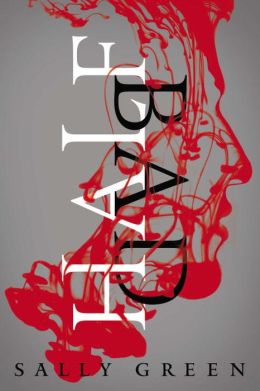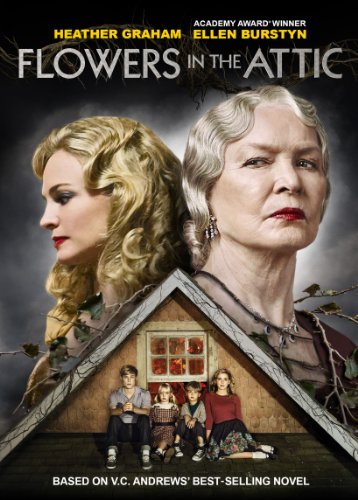 With the movie version of V.C. Andrews’s immortally trashy, creepy, compulsively readable book Flowers in the Attic, about to be released on DVD, I started thinking about bad books and what makes some of them so good. (And by “good,” here, I mean irresistible despite obvious flaws.)
With the movie version of V.C. Andrews’s immortally trashy, creepy, compulsively readable book Flowers in the Attic, about to be released on DVD, I started thinking about bad books and what makes some of them so good. (And by “good,” here, I mean irresistible despite obvious flaws.)
I have loved a number of questionably tasteful books over the years. Some were books I was convinced were well written when I read them as a child or teenager, and upon re-reading them as an adult, I realized my literary faculties were perhaps impaired by competing interests with a higher priority at the time: a cozy or magical world I wanted to live in, perhaps, or a hunger for mystery, adventure, and suspense, or, later, curiosity about romance and sex. Was it narrative drive that made some of the poorly written books so readable? Or the introduction to some hitherto taboo topic? All I know is, it didn’t matter to my reader self at the time that the books weren’t well-written or the characters beautifully developed. They sparked my imagination. And I did grow up to have credible critical faculties despite the popcorn reading, so they didn’t ruin my brain. Of course, they weren’t all I read, either.
So I wanted to throw it out to you: What makes a bad book good? And which ones did you love best?
Observations from Behind the Counter
Josie Leavitt - March 11, 2014
I love my job. I think we all know bookselling is fun and makes you feel good about life. After all, connecting people, especially kids, with books is a wonderful, lasting thing to do. There is humor every day. Here’s a snippet of some of the humorous things that can happen at the bookstore.
– The minute someone walks in the door, they forget the title of not only the book they’re looking for, but of every book they’ve ever read. It happens so often that we just anticipate them saying, “I knew the name of the book in the car.” Of course you did. We console them by saying, “No one remembers a book title while in the store.” We offer a sticker and a hug.
– By the 10th minute someone’s in the store and still struggling with the title, we become forensic scientists: What time did you last remember the title? Where were you when you heard it the first time? What NPR program was likely to be on? Who was the host? What time of day was it? Then we pick the most likely source and go to their website to look up their books link.
– Every section is alphabetically arranged. There really is no other way to arrange books, ever.
– We often do know books by their color, but we don’t like to tell people that. Honestly, if it weren’t so hard to do, we’d arrange the store by color and size for April Fool’s and see if it made it easier for folks to find things.
– Kids kiss the pigs on the carpet every day. They bend down and exclaim, “Piggy” and give the rugs a little, or big, kiss. Watching a toddler try and hug a blue carpet runner with a white pig with wings on it is adorable and never ever gets old.
– The question “Would you like a bag?” is not a trap. We’re offering because we want you to have one. We’re not the food co-op. We don’t make you feel shame for wanting to keep your books safe and sound. But this question should not take minutes of decision. A simple yes or no suffices.
– Cardboard cuts hurt. This isn’t inherently funny, but my reaction to the searing pain and depth of the cardboard “paper cut” still amuses me. I’m surprised anew every time.
– Do not try to return a book you had on your lap while eating spaghetti. This has happened far more than I thought possible. While it’s always fun to swirl sauce-covered pasta with a fork and spoon, it’s not the neatest thing, so it’s best to just keep the now sauce-dotted book rather than trying to return it.
-The other day someone brought in a clearly read book and wanted to return it. I asked why and the customer said, “I didn’t like how it ended.”
Siblings at the Bookstore
Josie Leavitt - March 10, 2014
Every day, kids come to the bookstore to shop for themselves with their own money. I’ve spoken about how the kids learn about money with us. But they learn something else with us: how to be generous. I see it every day when siblings help each other out with book suggestions or funds.
It’s delightful to see older kids really listening to their younger cohorts. I’ve overheard conversations that rival any great bookseller handselling a beloved title. The enthusiasm is unbridled and there is also the benefit of really knowing them, so they can steer them away from books they don’t think they’ll like. Two brothers came in the store a few days ago. Cole wanted to read The Westing Game, but he’s only 6 and not a strong reader. His brother, Davis, 10, knew this would be a challenging read for him, and he also knew Cole would love it, but not yet. Davis deftly steered him away from the harder book to a more appropriate Encyclopedia Brown title. Cole looked mad at being handed what he thought of as “a baby book.”
I started shelving with earnest in the section next to them to better hear this conversation, looking to glean tips. Davis said, “When I was your age I loved these! ‘Cuz they’re fun and you learn stuff.” He scanned the selection and handed Cole, with a flourish, Encyclopedia Brown, Super Sleuth and then kind of punched him in the arm. While that is not a technique to emulate, it worked for Cole who was practically beaming that his older brother took the time to pick out a book for him. Then, just when I thought it couldn’t get any nicer, Davis said, “We can talk about it when you’re done.” I’m not sure if these boys are always this kind to each other, or if they were just having a good day, but there were several choked-up adults in the store after that exchange.
When siblings aren’t helping with book choices, they are often sharing their money. Yesterday, three sisters, ages 11, 8 and 5, came in; the two older ones had gift cards, the youngest didn’t. Everyone was getting rung up and the littlest one was doing a great job of holding it together until she realized she couldn’t get the fairy book she had been clutching. She did not have any money. The older sister had $5.18 left on her gift card and before her mother could even suggest that she use that to help her little sister get a book, she was buying Chloe the Topaz Fairy for her. Maria, the smallest one, then gave Addie a sticker from the book.
And then, I was dying of cuteness, again.
Do You Watch Book Trailers?
Elizabeth Bluemle - March 7, 2014
I’ll admit that I am not the most plugged-in person on the planet. I don’t spend much time watching YouTube videos, although I admit I will follow Facebook leads to the occasional snippet of goats bouncing on sheet metal, sneezing baby pandas, or really cool flash mobs and worldwide orchestral projects. Basically, videos have to come to me, and knock hard on the door, before I notice.
I think I’m missing out on book trailers. I’m not sure if it’s because I don’t frequent the websites or blogs where they are unrolled to the public, or if I’m not noticing promotions that arrive in my inbox. The ones I’ve seen have usually been terrific. But do people watch them?
For me, the most successful lures to watch a trailer have been via the author’s own website or an appealing widget in an industry email, like PW Daily or Shelf Awareness. There are a lot of beautiful and/or intriguing and/or charming book trailers out there, and I’ve very much enjoyed the ones I’ve seen, although I’m not sure if that always translates into my seeking out the book. Trailers are a marvelous tiny art form, yet one that I’m not entirely sure finds its audience.
I suspect that a lot of school kids and teens watch book trailers, and, even better, MAKE them for the books they love. I’m not as sure that trailers for picture books get seen, and yet one of my all-time favorite book trailers is Katie Davis‘s “Little Chicken’s Big Day,” which won the 2012 Trailee Award:
I saw that trailer in a seminar Katie led. In other words, once again, I was very specifically led to it. Are teachers and librarians and parents who aren’t already seeking out an author’s books finding these trailers, I wonder? And does it even matter if the videos only reach people who are fans already? What exactly is their purpose, their value, and their reach?
Readers, what is your experience with book trailers? Do you like them? Do you watch trailers for authors you don’t know personally, or whose books you aren’t already familiar with? Publishing folks, do you find that trailers are driving exposure and/or sales?
[Edited to add the following:]
Thinking about the topic made me wish there were some kind of website or app that served as a gathering place for all book trailers and was sortable by age range and genre, and perhaps some way to highlight the more amazing of the student-made trailers. Surely there is a student at Emerson or Simmons who would want to take this on…. : )
The Art of Returns
Josie Leavitt - March 6, 2014
Every year, during the long stretch of winter after Valentine’s Day and before Easter, returns become a way for many bookstores to manage their cash flow. Bookselling is one of the few industries that allows for returns for credit. These credits are usually issued in the full amount of the invoiced price. Credits can then be used to pay all or part of bills. This is a lovely, lovely thing, but it 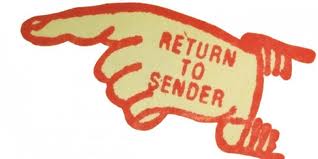 is not without its hassles.
is not without its hassles.
The best way for a store to keep on top of returns is to have someone on staff who coordinates them. We are blessed to have Darrilyn who is aware of every book’s out of print status in the store and knows the most up to date rules for making returns. Darrilyn also knows exactly where we purchased every book. This is very handy as somewhere along the line in the 18 years we’ve been open, the rules have changed. You can no longer return books to the publisher that you haven’t purchased through them. In the past stores were able to return books purchased at the distributors to the publisher for full credit. While this change is irritating, it makes perfect sense. So, here are some helpful hints for successful returns.
– Keep all books looking great. The rules for returns have also tightened in terms of what publishers will accept. There’s nothing more depressing than getting back “unacceptable returns” because the publisher thinks the book is dinged too much or has a sticker on it. Then you’ve paid to ship the book to the publisher only get charged to have it sent back to you.
– Have someone really organized be in charge of returns. Darrilyn is a whiz. The back room is largely her domain now. She has labeled piles by publisher and distributor. She even has piles with specific dates of when they can be returned. Occasionally, we make ordering mistakes (imagine!) and bring in too many of a book that turns out to be not as popular as we’d thought. But we have to wait three or six months to return it. Darrilyn pops the books on the return shelf with her label and the minute that book can be returned for credit, it’s out the door.
– Order less. I know this sounds elemental, but no one wants to be known as the store with a 50% return rate. I make smaller frontlist orders just so I don’t have to return as much. Ordering from the distributors is so easy, but now that things ordered from them can only be returned to them, I order less from them as well.
– Resist the urge to recycle all the boxes that come into the store. Frustration about not having boxes when you’re ready to do returns is needless and can be avoided.
– Do not buy cheap packing tape.
– Get a great rate from UPS and/or FedEx for shipping. The ABA has some great programs if your store does a lot of shipping. If you’re a smaller store, it’s still worth a call to your business rep for each big shipper. It’s amazing what they can do for your store if you just ask.
– In our old location we were across the street from the post office, so Media Mail shipping was easy. If your post office is easy to get to, then shipping with the USPS is far cheaper, but can take longer. Do a test and ship with one of each and see the cost and the delivery time.
– Do not overpack the boxes. Many publishers have stated rules about how heavy a box of returns can be. Pay attention to this. You don’t want a 40-pound box of book returns not counting because it was 5 or 10 pounds over their accepted limit.
– Know what your dollar limit is for returns. The distributors usually work on a rolling 12-month cycle. The publishers tend to work on the previous year’s purchases.
– Be somewhat ruthless when making returns. Yes, we all have our favorite books and these we keep around, to a point. But if books aren’t selling, or haven’t sold in months, maybe it’s to return them. I know ducks and bears are cute (always the kind of picture book I tend to overbuy) but it won’t hurt their feelings to send them back where they came from.
– The above point brings up a conundrum for all bookstores and backlist: what do you keep because you should have it, like classics, poetry and all the Newbery and Caldecott winners? Let’s face it, only 20% of the inventory sells, the rest is there to round out the collection and to please the folks who come in looking for less mainstream books. Every store has to judge and know what they can and can’t handle for inventory.
– Lastly, the rule of returns is as follows: the minute you return a book you’ve had on the shelf for two years, that has just been declared out of print, that you now have a three-month window to return before it goes in the Sale Bin of Despair, it will be the most asked-for book by all your customers.
– Actually, the final of rule of returns is to be a better buyer. Make discerning choices about frontlist, be bold in numbers when it’s warranted, and know that a hot book can always be reordered.
Money, Meet Mouth
Elizabeth Bluemle - March 4, 2014
If you’ve read my February 6 blog post, The Tipping Point for Diversity — Turning Talk into Action, you may recall my mentioning the terrific, impassioned conversation happening over at the CCBC (Cooperative Children’s Book Center) discussion group about diversity in children’s literature. Many people weighed in, and came up with ideas for how we might all do more than just talk about the issue. Toward the end of the discussion (discussion topics switch regularly in this moderated list, so this conversation had an announced start and end date), writer Sarah Hamburg, whose thoughtful posts were among the highlights of the conversation, created the following summary of participants’ proposed action steps toward change. I am sharing her post its entirety with her permission. (Anyone interested can also post the summary; Sarah’s goal is for this to be a living, breathing document, edited and added to by others, and — most of all — USED.)
Sarah Hamburg’s marvelous summary of activism steps follows. She writes:
I don’t know if I’m at all the right person to do this (in fact I’m sure I’m not), but as the conversation winds down I hope it’s okay to draw together the responses to the question about activism, and add some other possible thoughts/questions as well. Please step in if I’ve left anything out/ not hit the mark, or to take over!
– Many of the ideas focused on personal activism: actively buying books representing a diverse range of voices; committing to ongoing challenges (Crystal Brunelle mentioned The Birthday Book Challenge, Diversity on the Shelf Challenge, and Latino/as in Kids’ Lit. Challenge); recommending and promoting diverse books to others when and wherever possible; asking for them at bookstores, schools and libraries; using social media in those efforts and to draw attention to issues of representation; writing reviews on Amazon, B&N and Goodreads; and stepping out of personal comfort zones to make connections and advocate on these issues.
– For writers and illustrators, people also suggested that personal activism would include: stepping out of artistic comfort zones; consciously considering questions of representation, audience and perspective in one’s work (including whether the perspectives and voices of people of color tend to be explored/presented in a heavy context); soliciting and listening to feedback from members of the communities one is writing about when going outside one’s own culture; and also considering questions of cultural bias and representation while conducting research and evaluating sources.
– The same considerations hold true for those publishing, buying and using books with children, promoting books to parents and teachers, creating library and bookstore displays… etc. including whether those books receive the same quality and quantity of promotion, and whether they are somehow held apart from other books.
– Many came back to the importance of smaller presses in making space for new voices. This included Tim Tingle’s publishers Cinco Puntos Press and RoadRunner Press, and Lee & Low Books. (Would it be helpful to create a list to share here of independent publishers who are actively publishing “multicultural” books?) Lyn Miller-Lachmann talked about visiting smaller presses at conventions to order books and create buzz. Jason Low talked about “liking” Lee & Low on Facebook and using social media to promote them and their titles, and purchasing their books through independent bookstores. Are there other ways people can actively support small presses, or that smaller children’s publishers can perhaps share resources to further cross-promote with one another? (Some consortium, such as an umbrella website?)
– People also mentioned the importance of writers’ events and conferences, such as the Native American Literary Symposium, VONA Voices, the Lambda Literary Foundation, the Asian American Writers’ Workshop, the Muslim Voices Conference, the Comadres and Compadres Writers’ Conference, and the Carl Brandon Society. (Would it be helpful to compile a list of similar conferences/organizations, too?) Is there a way to facilitate more outreach to events such as these, and also encourage more inclusion/ promotion of writing for children at those events?
– Along with such conferences, people talked about the possibility for individual outreach to writers/ artists who are working in other areas, but who seem like they might be suited to the children’s book field (like Debbie Reese introducing Eric Gansworth to Cheryl Klein.)
– It’s exciting to see new businesses forming, like Cake Literary and the Quill Shift Literary Agency (where you can sign up to be a reader.) Are there other ways people could help promote them?
– People have also started an amazing array of blogs, websites and tumblrs that focus on aspects of diversity in children’s books. These include Diversity in YA, Rich in Color, American Indians in Children’s Literature, The Dark Fantastic, CBC Diversity, Lee & Low’s blog, Cynsations… (I know I’m leaving many out! Please add them – would a list of these be helpful, too?) Would it also be helpful to create some sort of consortium here as well – like the Niblings umbrella?
– In addition, people asked that “diversity” be an inclusive idea, and not limited to one group or set of groups.
Along with these existing or already mentioned avenues for activism, I had a few other possible ideas based on issues people have raised. Some may well already exist in some form, and if so please excuse my ignorance! I also don’t know if some may feel segregating rather than inclusive, or otherwise problematic – but here they are:
(All initiatives mentioned below would include leadership in design and implementation by people from the communities in question.)
– School Library Journal/Horn Book…etc. might create a regular column, written by a Native, PoC, and/or LGBT, and/or Muslim, and/or disabled contributor, which might discuss issues regarding children and books in different communities, or highlight reviews of recent books by people from those communities, or discuss collection development/classroom use issues related to problematic books, or be published in a bilingual format, or simply be a space always kept open for additional voices from less-represented communities.
– Development of a course within the Massachusetts 5-college area, in conjunction with the Carle Museum, for Native college students/ students of color to study illustration and writing for children.
– Outreach to a group like 826, with centrally-organized workshops about writing/illustrating led by people in the children’s book community.
– A group within SCBWI for Native artists/ people of color to meet and speak about issues in the field specific to their communities, and provide resources and networking opportunities.
– A subsidized (with some form of community grant?) internship at one of the children’s publishing divisions or literary agencies for a person of color or Native person.
– Some form of organized mentorship program for aspiring authors/illustrators.
– A bilingual division of something like NetGalley, featuring bilingual books, and other books by Latino/a writers and illustrators.
– A group made up of members of publishers’ marketing departments, convened to study marketing strategies and approaches, with leadership that includes outreach to, and input from, members of different communities.
– Some e-publishing/print-on-demand initiative or business, focused on bringing back out-of-print titles by people of color.
– Also, something like the New York Review of Books Classics, which would bring back into print/reissue/hghlight classic children’s books by people of color – including international titles. (Or, actively petitioning the NYRoB children’s collection to include more such titles – do they currently have *any* books by people of color on their list? I couldn’t find them.)
– Concerted outreach at events like Bologna to find and acquire titles by international authors of color/indigenous authors for publication in the U.S.
– Something like the PEN New England Discovery Award (which recognizes the work of unpublished children’s writers, and provides an opportunity to have that work read by an editor at a publishing house) that would be national, and would recognize work by unpublished Native/PoC writers. It could include a specific category for nonfiction.
– Inclusion of Toni Morrison’s book Playing in the Dark (and Zeta Elliott’s article “Decolonizing the Imagination”) on the reading list at MFA programs focused on writing for children, with a curriculum that includes more lectures/discussions about race, writing and the imagination – not just in the context of discussion about writing outside one’s own culture.
– Focused outreach as part of recruitment initiatives for MFA in writing for children programs (perhaps writers’ conferences like those listed above would be one good place?) and promotion of existing opportunities like the Angela Johnson scholarship.
– A centralized resource for parents/ teachers that would look at still-read classics and more contemporary books, and examine different responses/perspectives on those books related to representation. This might include strategies and perspectives on classroom use. (A sort of “critical engagement” resource, with different perspectives – like that of Debbie Reese’s American Indians in Children’s Literature.)
– More inclusion of issues related to representation/cultural bias in reviews of current nonfiction and fiction titles.
– Some central website to publish/promote lists of recommended titles (such as the Top 100 Books by Indigenous Writers, Recommended Books regarding the Middle East, Lee & Low’s Pinterest pages, and the many other lists of recommended books shared here…) There might also be the possibility of compiling and promoting new lists, based on the needs and interests of those who work with children. Maybe individual titles from the lists could be highlighted on a rotating basis as well.
– Lobbying and activism on related issues, such as funding for public schools and libraries, and support of those institutions (as well as businesses like independent bookstores) on the local level.
– As Malinda Lo asked for, greater inclusion of PoC/ Native/ LGBT/ Muslim/ disability community voices at the head of these discussions.
****
(Back to Elizabeth now.) Thanks so much, Sarah, for synthesizing all of these terrific ideas.
Readers, how do you feel about these individual and community efforts? Is there anything you would add?
A Board Book Love Affair
Josie Leavitt - March 3, 2014
I cannot remember when the lap-sized board book made its appearance, but I’m sure glad it did. I 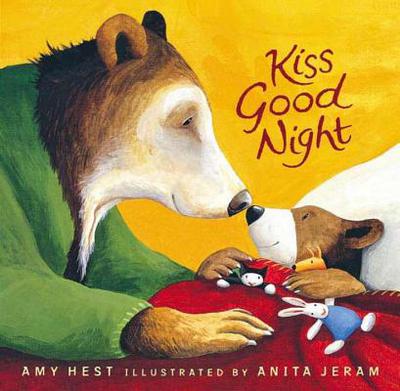 just love these books. I’m a fan of board books in general. Their ease of use for babies and toddlers is genius as is their practical indestructible format, but I often found regular size board books too small. I hated that the art in them was often missing something of their hardcover counterparts. Then came the lap-sized book, and the art was huge and glorious.
just love these books. I’m a fan of board books in general. Their ease of use for babies and toddlers is genius as is their practical indestructible format, but I often found regular size board books too small. I hated that the art in them was often missing something of their hardcover counterparts. Then came the lap-sized book, and the art was huge and glorious.
The genius behind the larger board lies in two areas. The first is the art because it can now be showcased in a book that kids can’t rip or get paper cuts reading. Little ones explore the world with their mouths and larger board books allow them a lot of room to chew. The second thing I love about these is parents can sit with a baby in their laps and have a full-sized 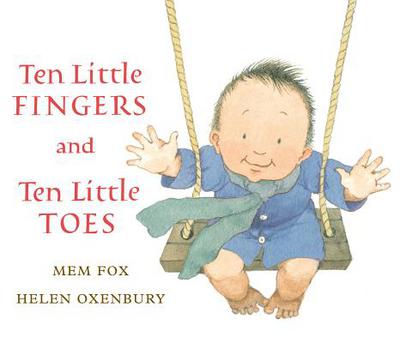 reading experience without worrying about damaging a book. It is so easy for little hands, surprisingly strong hands, to just scrunch up the pages of a book while they’re being read to. The lap-sized board book allows for close, together reading time without the parent correcting the child about not hurting the book. This is freedom for all involved.
reading experience without worrying about damaging a book. It is so easy for little hands, surprisingly strong hands, to just scrunch up the pages of a book while they’re being read to. The lap-sized board book allows for close, together reading time without the parent correcting the child about not hurting the book. This is freedom for all involved.
The art is so important in books for babies, whether it’s the contrast of colors or spotting the balloon and the mouse in Good Night, Gorilla or being able to see all the babies in Ten Little Fingers and Ten Little Toes. I love seeing little ones poring over a book and taking in the pictures. And just because they’re little doesn’t mean every reading experience should be reduced for safety’s sake.
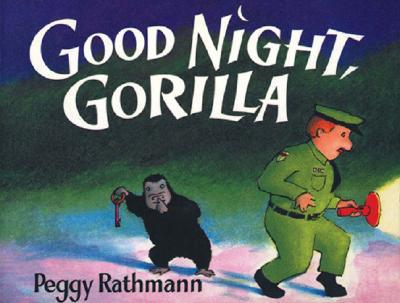 Lastly, lap-sized board books make great new baby gifts that can be enjoyed by older kids who might think of regular-sized board books as only for babies. All my younger nieces and nephews get this size book now. I eschew hardcovers until kids are at least three or four just because it’s hard to see a book get damaged by a kid being a kid. That’s not fair. And so many great books are now available in the lap size that it’s easy to keep everyone stocked in books.
Lastly, lap-sized board books make great new baby gifts that can be enjoyed by older kids who might think of regular-sized board books as only for babies. All my younger nieces and nephews get this size book now. I eschew hardcovers until kids are at least three or four just because it’s hard to see a book get damaged by a kid being a kid. That’s not fair. And so many great books are now available in the lap size that it’s easy to keep everyone stocked in books.
Oh, and the truly great thing about the lap-sized book is it can be comfortably read with a child in your lap, a chubby hand on your knee and a little one saying, “Again” when you’ve come to the end.
Galley Triage
Elizabeth Bluemle - February 28, 2014
Almost nothing makes me happier than stacks of thick books waiting to be read—nothing, that is, except reading them. And booksellers have stacks, totebags full, book cases and back rooms overflowing with a riot of ARCs (advance reading copies). Not to mention a laptop full of Adobe Digital Editions. It’s an abundance of riches with a sad corollary: there is no way to read them all.
Figuring out which ones to read and which not to is a combination of whimsy, experience, and research. I reach for the titles by authors I love to read, for books that have been getting starred reviews and bookseller buzz, those the reps stick special Post-Its on because they love a book so much they don’t want it to get lost in the crowd, and those whose covers simply lure me in. (Yes, we are a visual culture, and yes, we judge books by their covers. Not only by their covers, but of course we do.)
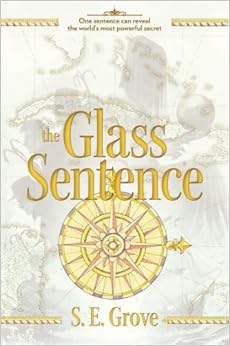
I often avoid the blockbusters, knowing that they’ll sell themselves. But if I’m in love with the series, of course I can’t resist. Sometimes I’m perversely drawn to the most obscure books, the ones I think two or three of my customers at most will be interested in; I think it’s a form of defiance, a way to carve out some pleasure reading that isn’t about work in any way.
And I’m drawn to the books that don’t look or seem from their reviews to be like anything else on the shelf. Freshness is a hot commodity when you have been immersed in a literary field for almost 20 years.
I know a book is good when I am immune to the siren song of all the other books waiting for me.
Still, there is the guilt. And the reproach of the unread stacks all around.
The first two books shown in this post, Viking’s HALF BAD by Sally Green (loved by a bookseller friend) and THE GLASS SENTENCE by S.E. Grove (also recommended by a fellow bookseller), are my next two reads. Currently, I’m on Mount Elbrus with Jordan Romero, author with Linda LeBlanc of NO SUMMIT OUT OF SIGHT: THE TRUE STORY OF THE YOUNGEST PERSON TO CLIMB THE SEVEN SUMMITS (Simon & Schuster). The kid climbed Kilimanjaro at age 10 and Everest at age 13. Cannot stop reading.
After that, I’m not sure. I’ve got hundreds of books clamoring.
What do YOU recommend I read next? And how do you folks in bookselling triage your stacks?
It’s More Than Shopping Local
Josie Leavitt - February 27, 2014
I am discouraged. I know I often cheerlead for independent bookstore, but I’ve overheard one conversation too many this week about people and their Kindles. Two women at the gym were discussing how to find a “lost” book on their device. I resisted the urge to tell them that they don’t really own anything on the Kindle: Amazon can take it away anytime they feel like it, as they did with all MPS titles a few years back. This conversation has really stayed with me and made my shoulders slump. Perhaps it’s the cold that has set in, but some days I fear the bookstore will go the way of the record store. Some of our younger readers might be wondering, just what is a record store?
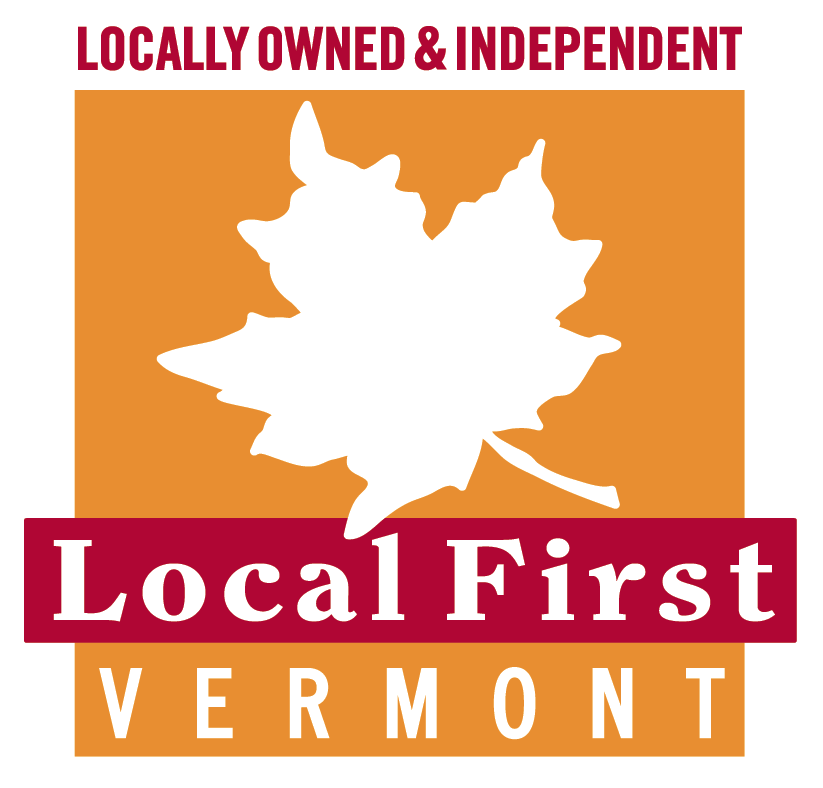 I cannot stress this enough: you must shop at the stores you want to stay open. I know I said this in December, but it’s even truer now in the long stretch of winter before Easter, when book buying budgets are tight for everyone. Yes, it’s easy, and probably fun, to buy books on line (I wouldn’t know, I’ve never done it) but there will be a price for the convenience. I’m just going to say this: Amazon is a company that is out only for itself. Their business model is one based largely on trying to beat the competition by selling books at a loss to lure you into the site to buy more things that are not so steeply discounted. Most other businesses I know cannot sell their products at a loss. We don’t really have cool gadgets. The American Bookselling Association tried to get us all gadgets to sell, but we came to that danc party a little too late and that never really took off, as Amazon and Apple were already deeply entrenched in the public’s eye as the devices to get.
I cannot stress this enough: you must shop at the stores you want to stay open. I know I said this in December, but it’s even truer now in the long stretch of winter before Easter, when book buying budgets are tight for everyone. Yes, it’s easy, and probably fun, to buy books on line (I wouldn’t know, I’ve never done it) but there will be a price for the convenience. I’m just going to say this: Amazon is a company that is out only for itself. Their business model is one based largely on trying to beat the competition by selling books at a loss to lure you into the site to buy more things that are not so steeply discounted. Most other businesses I know cannot sell their products at a loss. We don’t really have cool gadgets. The American Bookselling Association tried to get us all gadgets to sell, but we came to that danc party a little too late and that never really took off, as Amazon and Apple were already deeply entrenched in the public’s eye as the devices to get.
Here’s the thing: practically every day I have a customer who is visiting from a town where there is no longer a bookstore. These are sad people. But then they enter the store and smile. They visibly relax. They are home. This feeling is impossible to quantify in business terms. But this is what needs to happen. It’s more than shopping local. It’s shopping where the passion is. The passion for books, or wine, or music, or toys, etc. This needs to be the next wave of the independent store campaign. Do not misunderstand me: I love the shop local movement. It has been a boon to business in many ways, but it needs to shift because there is no urgency there. Urgency doesn’t need to be negative, it just needs to inspire action.
Sadly, it’s often not until a store is gone that folks realize how much that store was entwined into their lives and they feel the distinct lack of it. So, be preemptive and shop where the passion lives on the shelves every day. Shop where people work because they can’t not work at a bookstore. Shop where conversations are about celebrating an art form (and this is where Amazon can’t hold a candle to a bricks and mortar store). So, shop at all the stores you want to stay open, because once they close, they’re gone.
Bleak Books: The Best, the Bad, the Broken
Elizabeth Bluemle - February 25, 2014
As a reader and as a bookseller, I think about this question a lot: why are some bleak books compelling and memorable and worthwhile, while others make you regret the hours — and the erosion of your soul — wasted upon them?
I used to think it was a matter of hope, some sense at the ending that redemption was, if not at hand, at least possible. And maybe that’s true, but I’m not sure it is. I’m not certain I could make that case for some of the books I’ve found deeply affecting.
My reading tastes don’t generally include a whole lot of death. I have zero interest in novels about serial killers, or mysteries with their endless parades of dead women. And yet, some of the most powerful, memorable books I’ve ever read are violent. Harrowing. Chris Cleave’s Little Bee stays with me years later. Cormac McCarthy’s The Road is a stunner. This weekend, I finished reading an extraordinary debut novel, The Kept by James Scott, and while it was totally different from The Road, I found it similarly riveting and unforgettable. (Run, don’t walk, to read The Kept if you valued The Road. Not a book for kids.)
Perhaps it’s the rendering of the characters themselves, and not the ending, that separates a good bleak novel from a poor one. When the characters are fully developed humans, flawed and trying, as terrible as their choices may be, we care about their journey.
In YA books, Adam Rapp’s 33 Snowfish remains one of the most searing, jagged, bleak and beautiful books I’ve ever read. I was truly grateful for the flicker of hope it provided at the end. Patrick Ness’s Chaos Walking trilogy is brilliant; at least, I can speak for the first two books. I cannot yet bring myself to read the third; I am afraid of its potential to swallow me whole. The author is masterful, and I find myself too invested; he is too good at making me feel the bleakness. And yet, though I avoid Monsters of Men’s possible bleakness, I count it as most worthy.
Books for teens must earn bleakness very carefully. We owe young people hope; it is usually self-indulgent to make them wallow in our adult disappointments. The bad bleak books do this, I think.
Maybe a good bleak book is one that makes us face some of the harder human truths, makes us think, disturbs us — upsets our simple preference for rewarded virtue and punished villainy — in important ways. The good bleak books deepen our appreciation for humaneness, mercy, compassion. Perhaps the good bleak books shatter our hearts, but show us how to start putting them back together again.
What do you think, those of you who have found yourself loving some bleak novels and hating others? What separates the blazing ones from the sour, empty ones?

